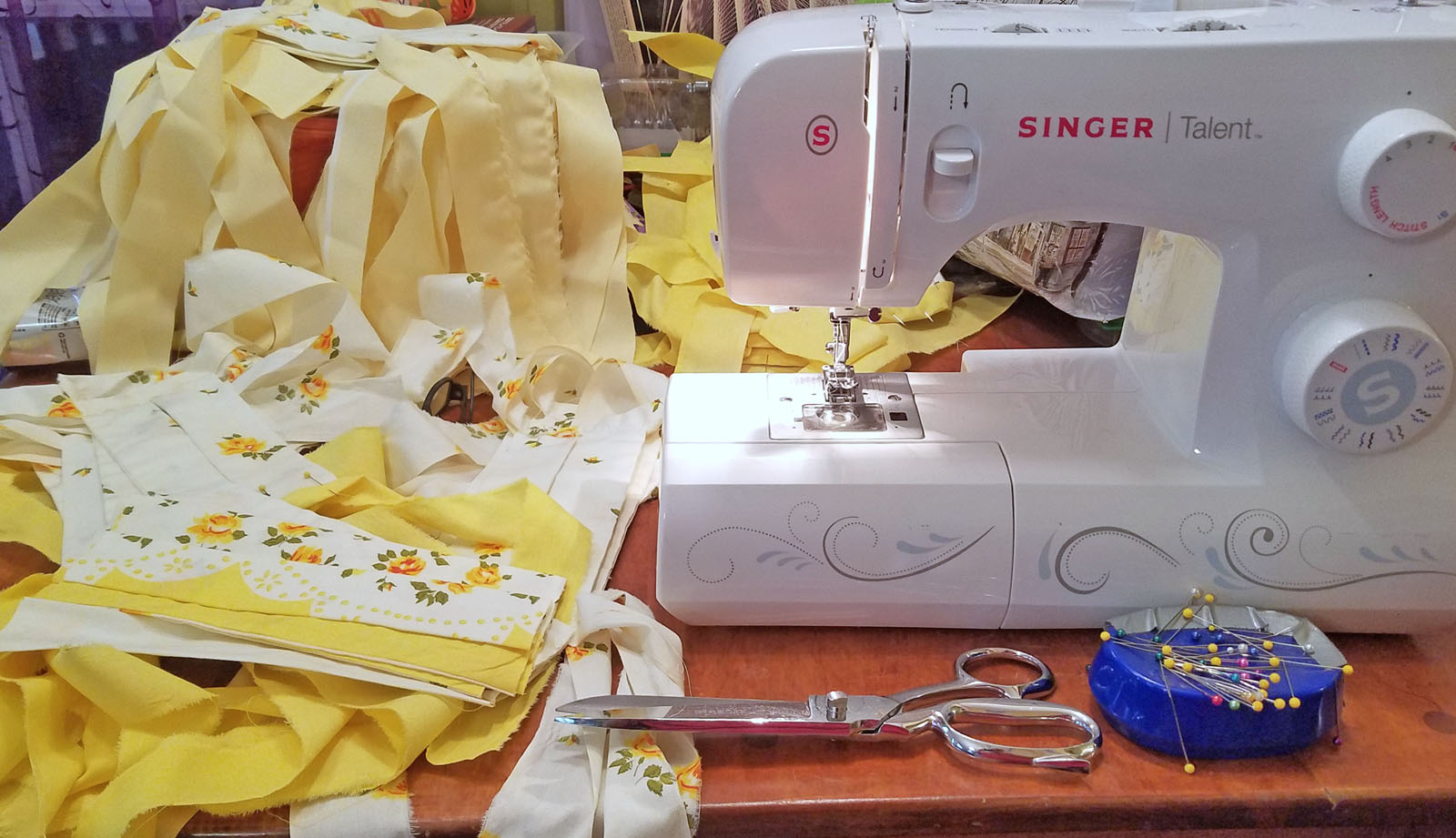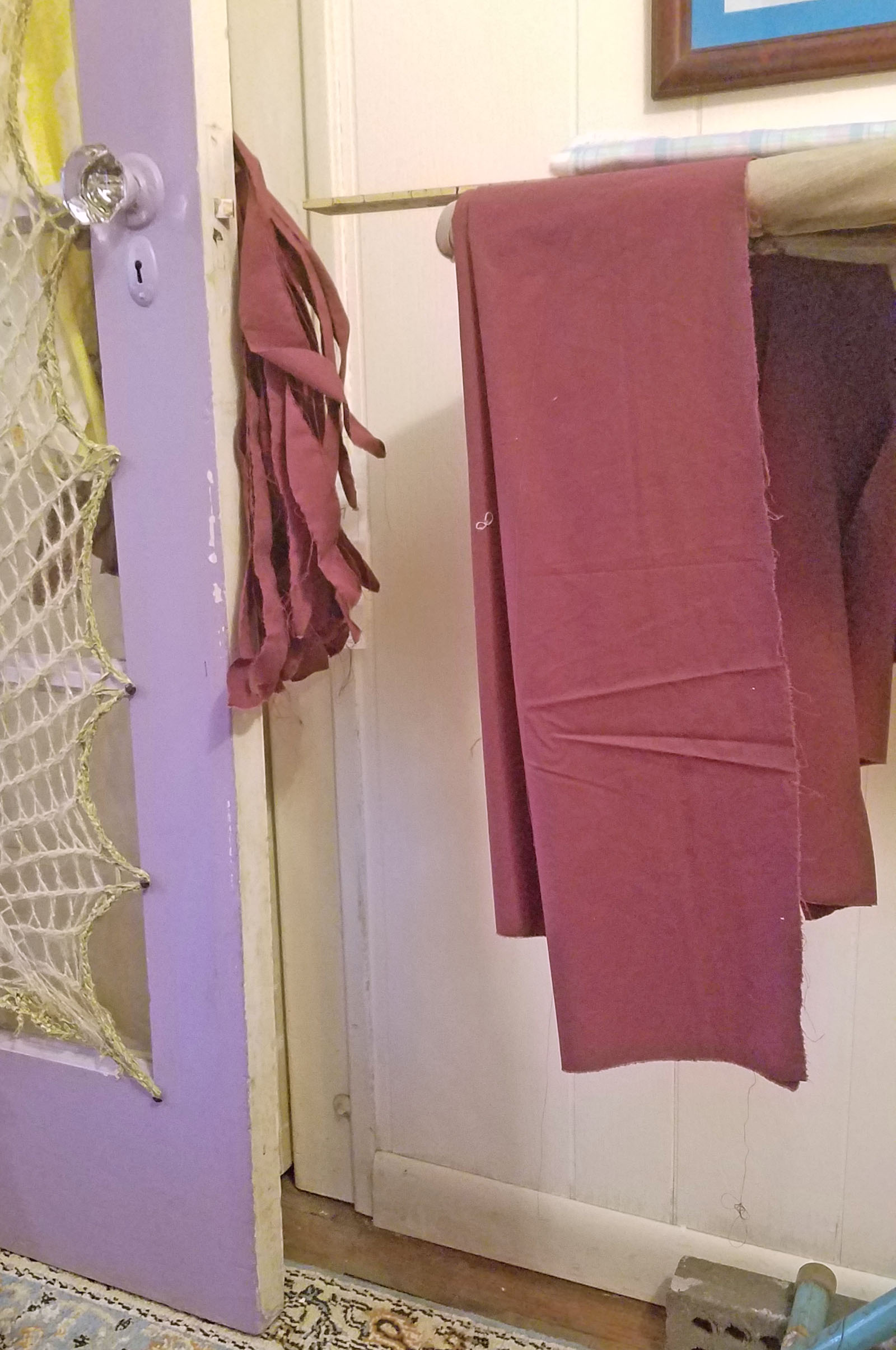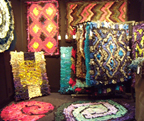Published on Linkedin as Home Ec Beats Higher Ed
What does it look like to be a mask maker in April of 2020? I realized last night I haven’t taken any pictures of the masks I had made; I’m up to 280 and starting to run low on stash. I miss my thrift shops. I miss cheap fabric. I certainly have a fair amount of fabric on hand; haven’t bought anything new for the masks I’m making. Last night I tore up 8 yards of border print cotton that was probably sold for curtains. Can’t remember where I got it. It will turn into about 75 masks. They don’t have a destination yet, but I’m planning to call the local women’s shelter, or maybe another daycare center. A church group in Ohio got 70 masks on Monday, and another daycare got 30.

These aren’t medical-grade masks, by any means. I described them as better than nothing, and that’s exactly what they are: better than nothing. I quit putting pipe cleaners at the nose because it was a pain in the butt to sew.
The plan is to make as many as possible so that as many people as possible have a mask to wear, rather than to make the best possible mask. In this case, anything is better than nothing.
As I continue to make these masks and watch people say, “No, thank you, I don’t need any,” and then come back to me a week or two later and say, “Hey, do you still have those masks?” I realized we are going to be doing this for at least a year. Stock up, people, you’re going to get tired of the masks you have.

The world is moving into mask production. All of the print-on-demand houses have both the tubular masks, and masks with elastic and masks with ties. I’ve seen masks with pictures of dogs on them. (Be careful; our dogs are very disturbed by these.) I saw somebody with a picture of a wine glass on her mask and thought that was probably ill-advised, but she didn’t ask my opinion.
It is a little disturbing that the most useful thing I can do in this pandemic is use a skill I acquired when I was 10 or 12 using technology that, mostly, has not changed since 1860 when sewing machines were first invented. A zig-zag stitch saves lots of time. Sewing machines freed-women from the drudgery of hand-stitching every item of clothing their families wore, giving them the time to learn to read and kicking off an enormous cultural transition.
I can only wonder at what cultural transitions will follow from this current pandemic. Every pandemic brings changes. We have no idea what’s going to come from this, as everyone gets COVID-19 over the course of the next year, and a substantial number of those people are left functionally disabled by the disease.
And so I sew. We will be wearing masks for a long time, as gradually we return to some semblance of our former life, go out in public, and try to keep from getting sick. The people who think that only the weak can’t afford to get sick will eventually discover that when the strong get sick, they’ll wish they hadn’t. This disease leaves marks.
I miss my thrift shops, and I miss access to cheap fabric, and I don’t know what I’m going to do if I have to start buying fabric. Maybe I’ll stop making masks when I run out of stash. I have a lot of stash. A couple of years ago, I bought 25 lb of fabric, by the pound, from someone who had at least a ton of fabric he had bought from an estate sale. The deceased had been a quilter, and her stash outlived her. The rest of that fabric, if he didn’t sell it to someone else, was destroyed by Hurricane Matthew. Today I wish I’d got more of it at the time.
I can get ten masks per yard of 45” fabric with some extra for ties. I have 1500 connections in LinkedIn, and 750 in Facebook, and give or take, 10 or 12 of us are sewists who are making masks. If you wash your mask every day, you need at least seven, so that’s a boatload of masks to feed into the civilian population. Do the math. That’s 1500 masks per sewist. The most useful and cost-effective thing I can do for my family right now is help everybody stay healthy so that people I care about don’t face the $20,000 cost of a week in ICU.
Home Ec beats higher education.

